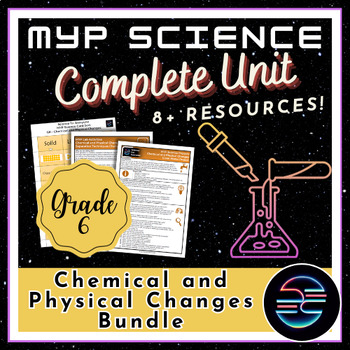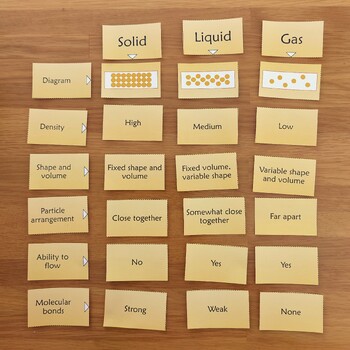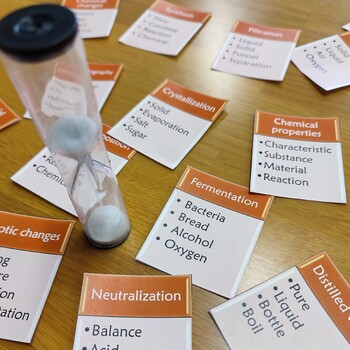Chemical and Physical Changes Complete Unit Bundle - Grade 6 MYP Science
- Zip
Products in this Bundle (8)
showing 1-5 of 8 products
Bonus
Description
This collection of resources contains everything you need to teach a full unit on Chemical and Physical Changes, bundled at 20% off. This is a project-based learning (PBL) unit recommended for grade 6 chemistry students, designed to be taught over 4-6 weeks including lab activities and appropriate assessments. Each inquiry-based resource has been created to meet the needs of the MYP but is equally appropriate for any middle school, high school, international or homeschool STEM curriculum.
This bundle currently contains the following resources*:
- Unit Plan - Chemical and Physical Changes
- Learning Objectives - Chemical and Physical Changes
- Daily Starter/Review Activities - Chemical and Physical Changes
- Card Sort - States of Matter Card Sort
- Experiment - Separation Techniques Challenge
- Debate/Discussion - Access to Clean Water
- Taboo Review Game - Chemical and Physical Changes
- Project - Clean Water Project
+ FREE BONUS project-based learning rubrics and guide
*Please note that any future resources added to this bundle will be available to purchasers at no additional cost!
Included in this bundle:
- Detailed unit plan outline aligned to MYP standards
- Student handouts and task sheets, including answer keys where applicable
- Printable resources and slides in a variety of formats
- Daily activities for introducing or reviewing topics throughout the unit
- Laboratory experiments to ensure skill development
- Discussion activities that provide opportunities for collaboration, communication, and reflection.
- Print and digital review games to engage your whole class
- Summative project with differentiated rubrics for MYP Years 1-5 (grades 6-10)
You might like this resource if you...
- Teach MYP science or a similar international science curriculum
- Want a consistent set of resources that promote inquiry, critical thinking, and problem-solving skills
- Are a homeschool parent/teacher looking for comprehensive units for your science curriculum
- Want complete unit plans with easy-to-follow activities for you and your students
Follow me to receive product updates and FREE monthly teaching resources!
Connect with me:
Blog - https://www.scienceforeveryone.me/
Facebook - https://www.facebook.com/science4every1/
Instagram - https://www.instagram.com/sci4every1/
LinkedIn - https://www.linkedin.com/in/jesse-versluys-bb342a86/
Pinterest - https://www.pinterest.com/sci4every1
Youtube - https://www.youtube.com/channel/UCuUcq_UYIczNm1JaFLGwxkA
Earn Free TpT Credits!
Leave feedback on your purchases to earn free TpT Credits that can be used on future purchases. Just visit My Purchases and click on Provide Feedback to leave a review and earn TpT credits.




